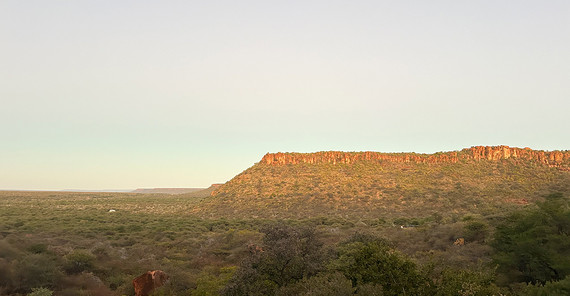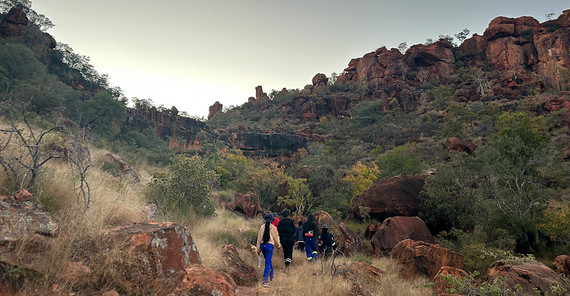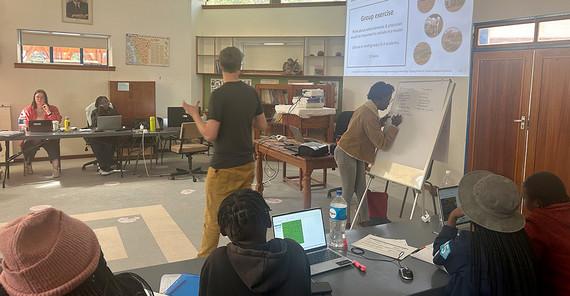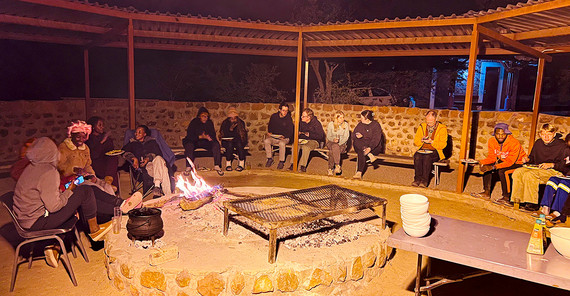In the next session, Dr. Gunnar Dressler introduces us to modelling social-ecological systems. As an opening task, he challenges us to develop a model in our had in order to estimate how many of his water bottles could fit into our lecture room. While we never settle on a final answer, we learn about various types of models and their applications. We discuss in particular agent-based models, and work in small groups to identify elements and processes for developing a rangeland management model.
We then explore Netlogo and use an interactive game to understand segregation and the Schelling segregation model. Afterwards, we dive deeper into NetLogo and discover a fully functional rangeland management model developed by Dr. Dressler. With it, we simulate different rangeland conditions based on adjustable parameters. Especially interesting is observing the impact of shock events, both from an ecological and a socioeconomic point of view. Throughout the lecture, three core rules of modelling stand out: “A model must have a purpose”, “Always keep it simple” and “All models are wrong, but some are useful”.
As a final lecture of the Winter School, we explore the topic of rangeland restoration with NUST PhD student Nali Moyo. We learn that successful rangeland management must include both social and ecological components. In this highly interactive lecture, we discuss indicators of land degradation and explore possible solutions from the perspective of communal farmers. The key takeaway: “Patience is key”.
In the evening, we satisfy our hunger with a traditional Namibian braai (barbeque) in front of the fire and under the starry night sky. Despite the cold, we enjoy our last night together between amusing conversations and card games.
Link to NamTip website: https://www.uni-potsdam.de/en/namtip




